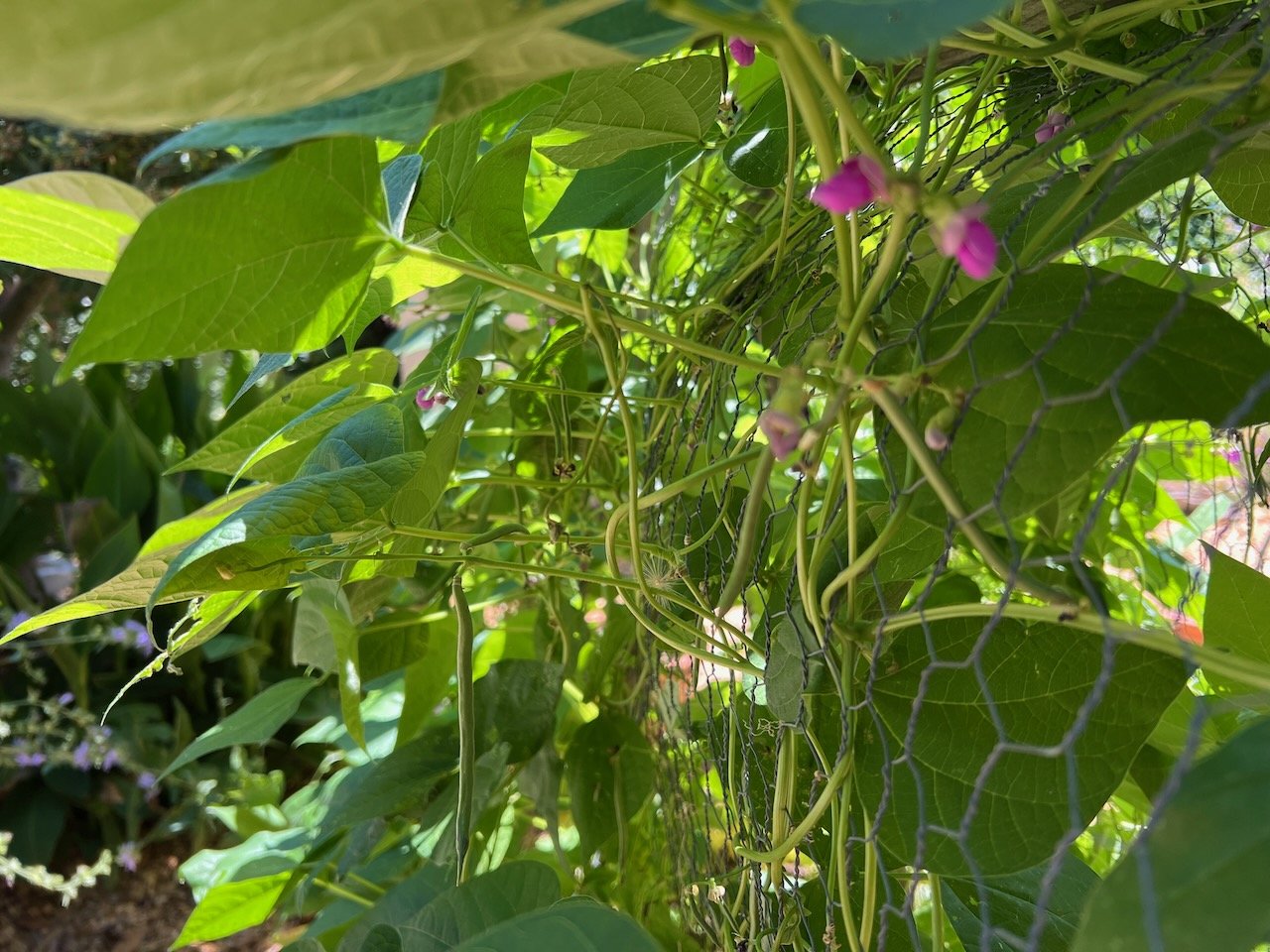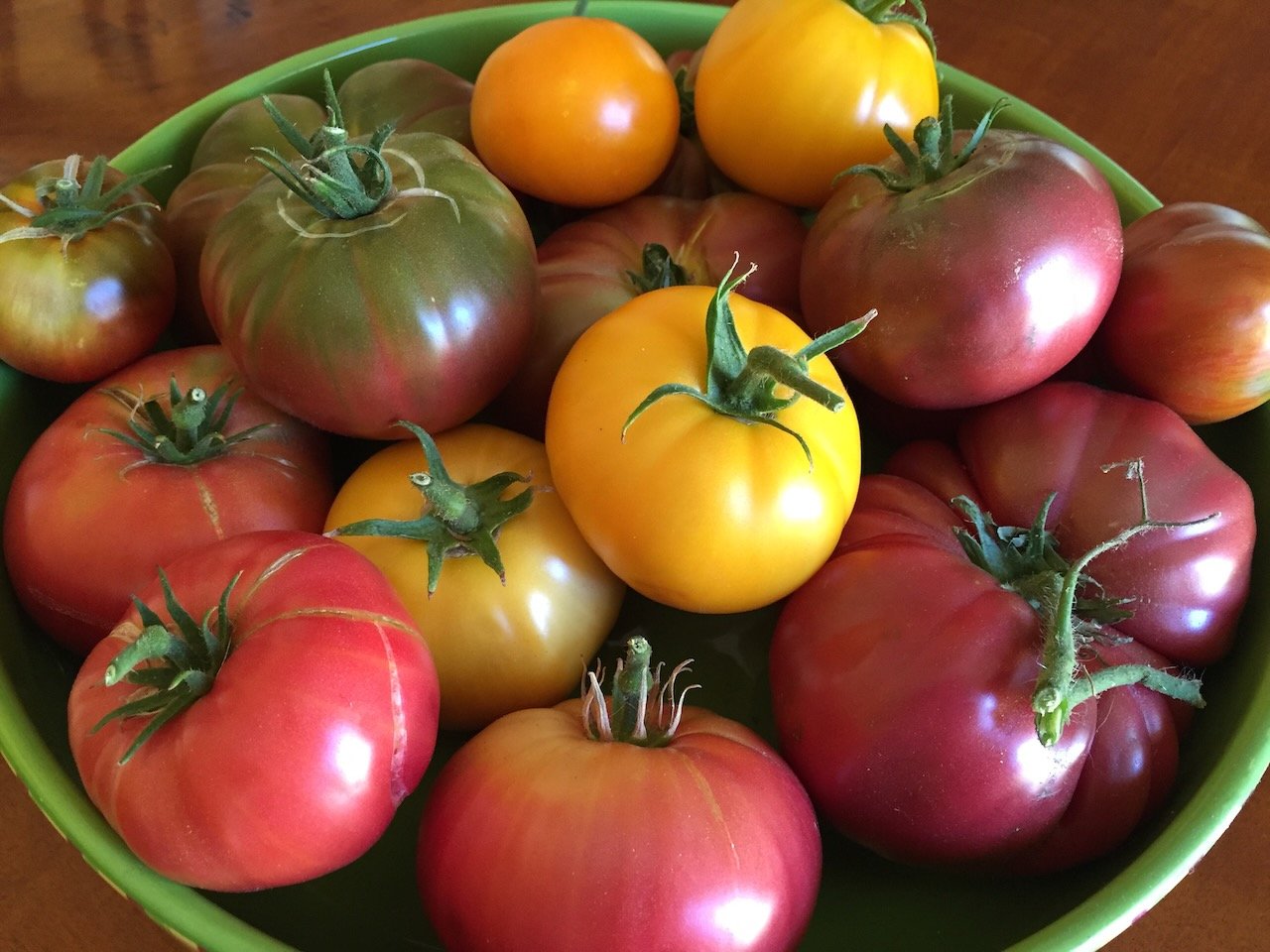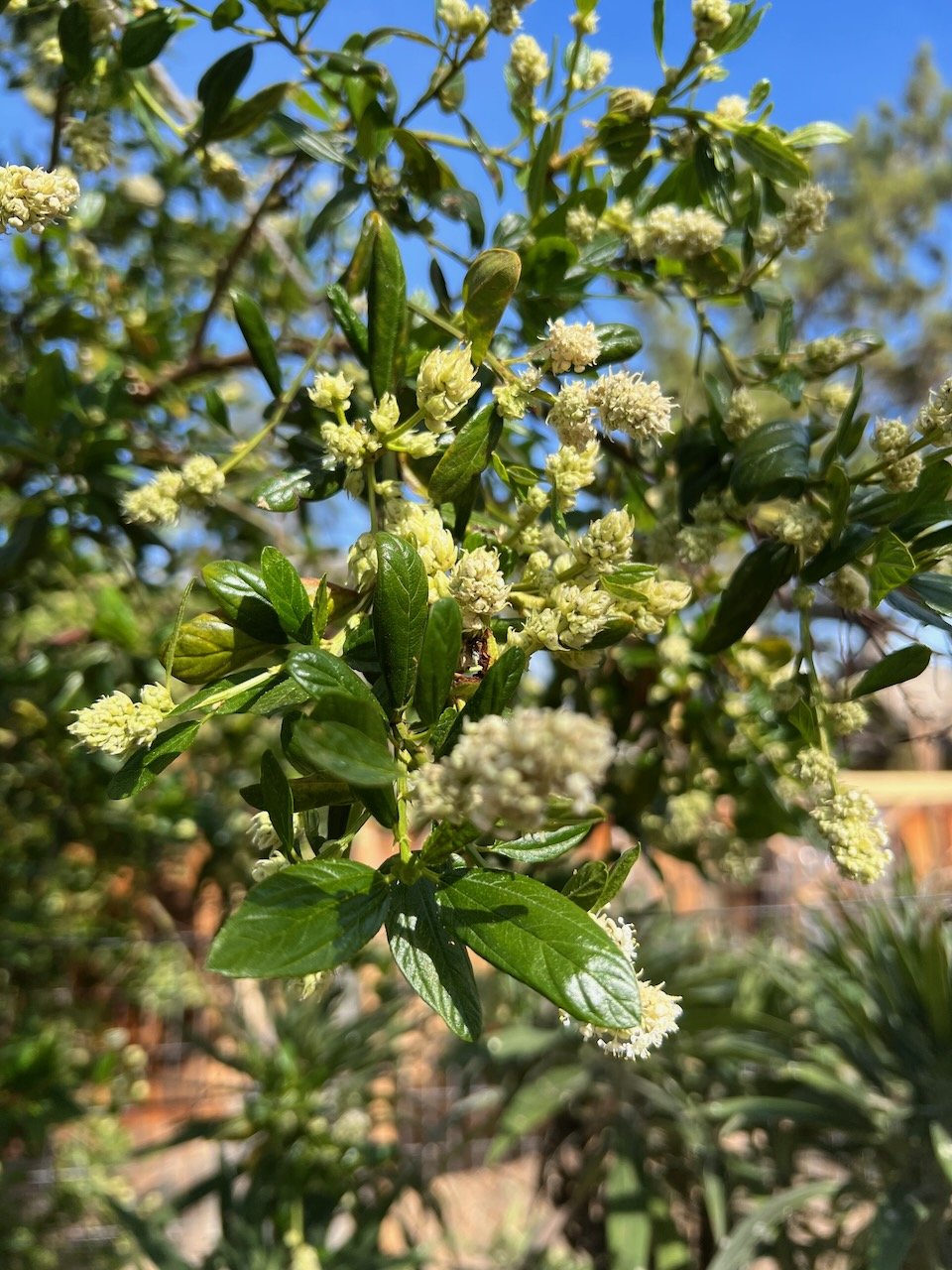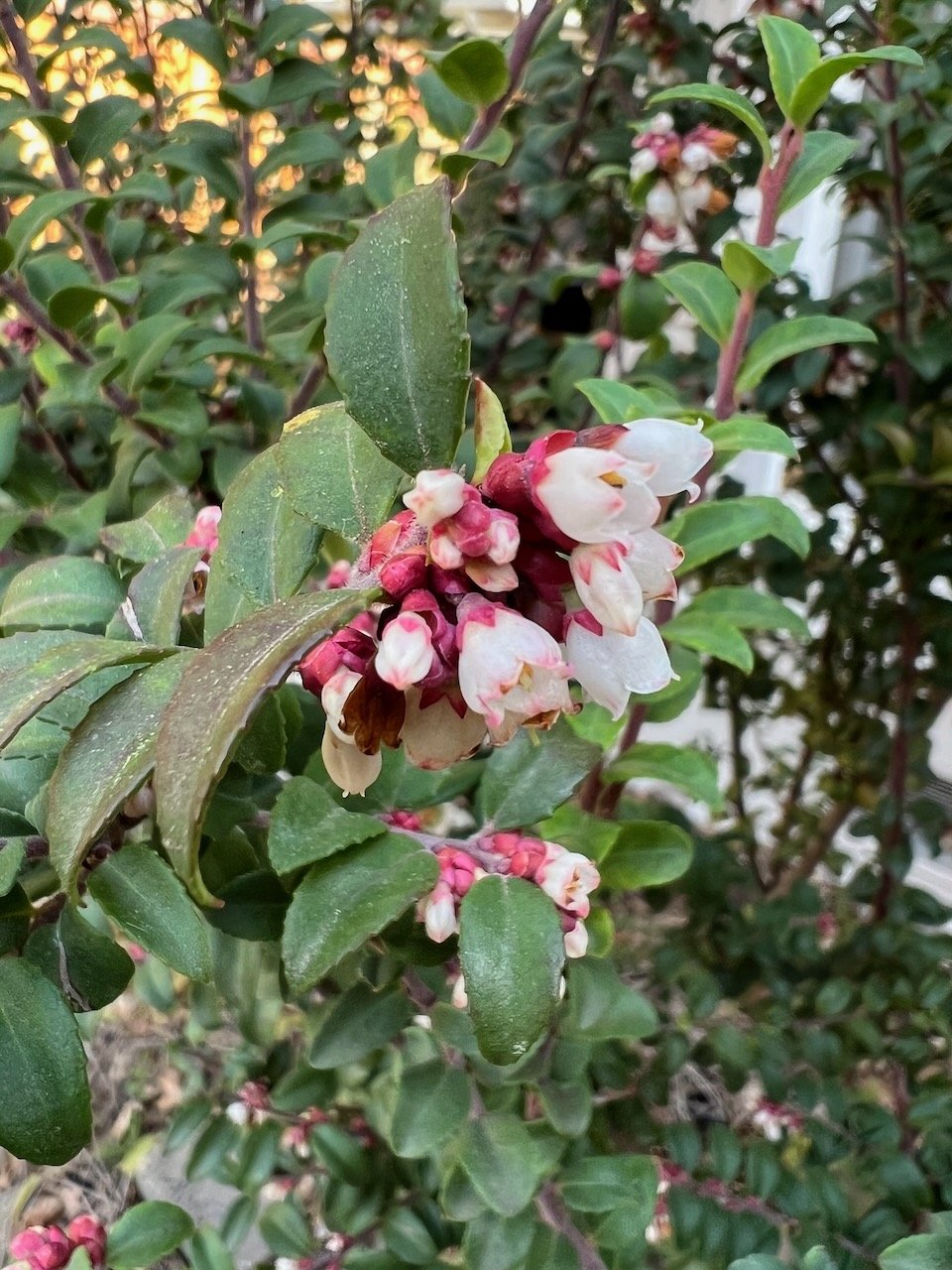This is a picture of our North Garden in summertime. We call it that because it’s on the north side of our property (go figure). This is where the chicken coop resides, and many of our fruit trees are here, too, and the asparagus bed in a shady corner.
Even though it’s on the north side of the house, this is the hottest part of our property in the summertime. We reserve it for tomatoes and peppers, and that worked fine for years. However, the last few years we had to cover this whole area with shade cloth because the plants were getting TOO much direct sun and literally burning up. The shade cloth didn’t seem to help much, and neither did more water. After three summers of failed crops, I got very frustrated. I started to feel like a big change was needed.
Back in September, at the same time we were experiencing temperatures of 115 degrees, I had one of my fall classes over to visit. It was humbling, because there was a lot of plant failure that week, and it was embarrassing to have fellow gardeners over to see the fallout. But I also figured, well, this is how we learn things. It’s important to see failure as well as success, and since I too will never stop learning and growing as a gardener, it was a good exercise for all of us and fostered some good discussion.
I was honest with my students. I told them that the North Garden had once been the jewel in our garden crown, but that it had been a disappointment three summers running. I told them that, with climate change, if I kept doing what I’d always done, I’d keep having failures, and that seemed futile. I shared an idea with them and asked them, as part of their homework, to give me feedback: Did they think it was a good idea, and if so, how would they implement it? And if not, what would they do instead?
My idea was this: To stop growing annual crops on this side of the garden, take out the raised beds, and plant an orchard instead. This would stack several functions:
1) It would still provide food for the family, to eat fresh and to preserve. One thing we’ve discovered is that when the kids are away at college, we really don’t need as much produce as we used to. We need things that freeze, can, and dehydrate well, for use in the off-season. Plus, Tom and I have been eating fruit as our dessert every night, so it would be good to have more of that available.
2) The garden on this hot sunny side would be fully perennial rather than annual, and after they are established, perennial plants need less water. Less water is good now and will be even better in the future.
3) The shade provided by the trees would help the chickens out. They also get very overheated in the summer, and tend to shelter under the quince and fig trees at the back of the run. If we gave them more shade, that would be good. More shade would also be good for the property at large, providing a more comfortable place for the humans to hang out, as well as wildlife. The soil biology would also enjoy a forest canopy and root system.
4) Reconfiguring the North Garden would allow us to build a better run for the chickens, more stable and more attractive, as well as better-proportioned for the humans trying to move around in it. The compost pile resides in the chicken run, and the way it is configured now, it is impossible to get a wheelbarrow in there. I’ve also torn many items of clothing on the makeshift fence we put up. It’s time to make a better enclosure.
My students were enthusiastic about the idea and had lots of ideas for which trees to plant. In October, I pre-ordered my trees from Peaceful Valley Organic Farm Supply. After a good deal of research, I decided to buy one each of All-in-One almond, French-improved prune, Burgundy plum, Jiro Fuyu persimmon, Comice pear, Bosc pear, Arctic Glo white nectarine, Freckle Face nectarine, Montmorency cherry, and Cox Orange Pippin apple. They will arrive in early February, except for the almond which has already arrived.
Tom and I have some time off now that our respective semesters are over, so in the next two weeks we will completely redo the North Garden. This is how it looked Monday morning.
You can see the cover crop I planted after the tomatoes failed, and then the smaller beds held basil and squash, which I tried this year instead of the usual peppers in this spot. Indeed, the peppers did better in the South Garden so that was good. However, the squash and basil didn’t do so well, confirming our feelings that this area is just too darn hot for annuals.
Monday, Tom removed the raised beds. Tuesday, he dug out the irrigation hoses so we’d know where they are. Today, I moved the compost pile from one section of the chicken run to another. The chickens loved that, and immediately started hunting in the area where the pile USED to be. They found all kinds of worms and roly-polies!
Tomorrow, I’m hoping to start work on the fence. Even though my semester has ended, I still have a lot of work to do at the school garden, so I’m trying to divide my time between the two places. But the fence is a crucial next step, as we can’t plan the spots for the new trees until it’s is built. Tom is drawing a plan, and we will be digging deep holes and mixing a bit of cement and putting in posts. After that, we’ll attach the wire fencing and move the gate to a better place. The chickens will have a bit more room, and we’ll be able to maneuver around in there better.
Part Two to come soon!












































